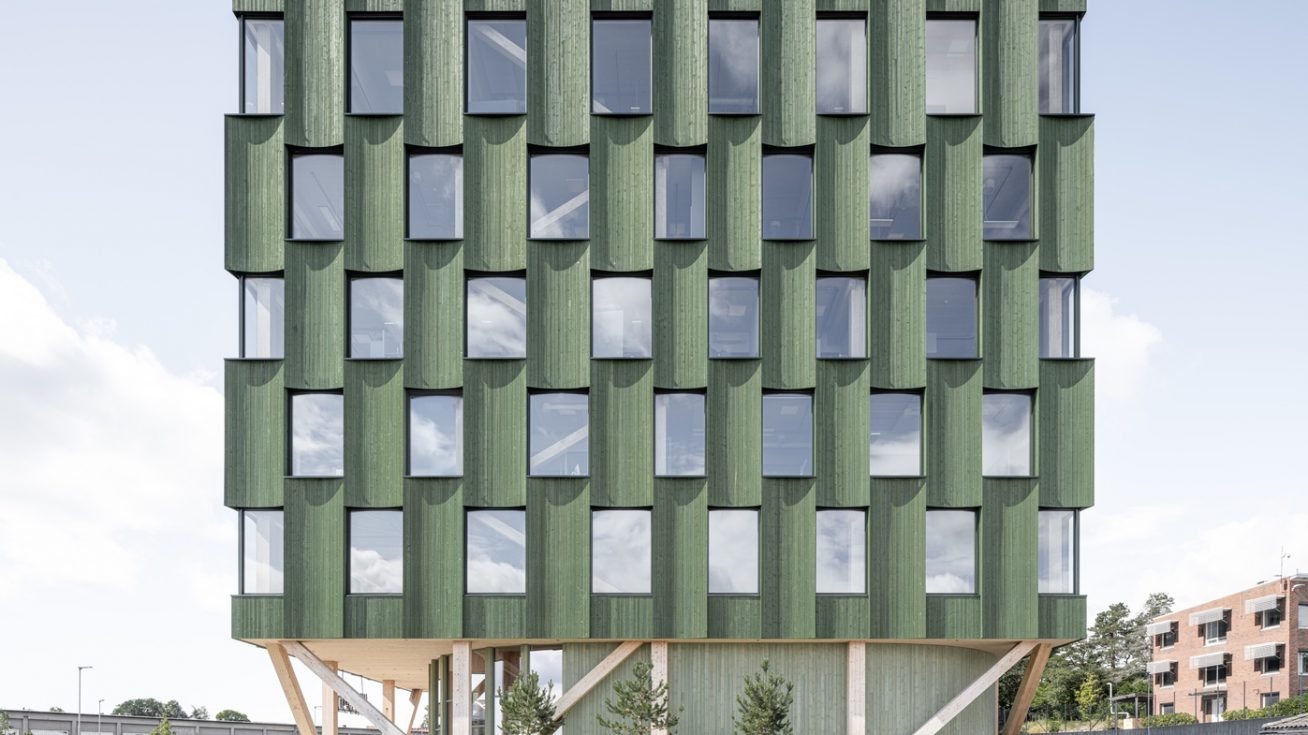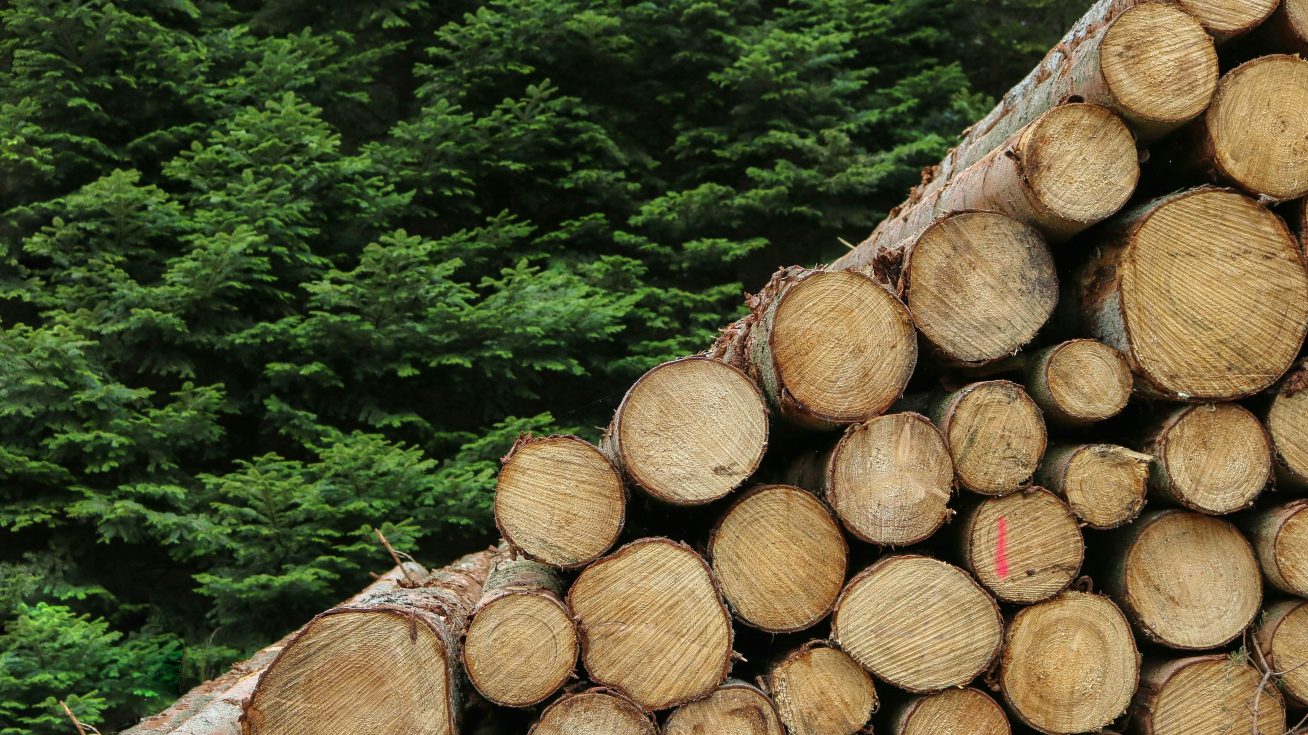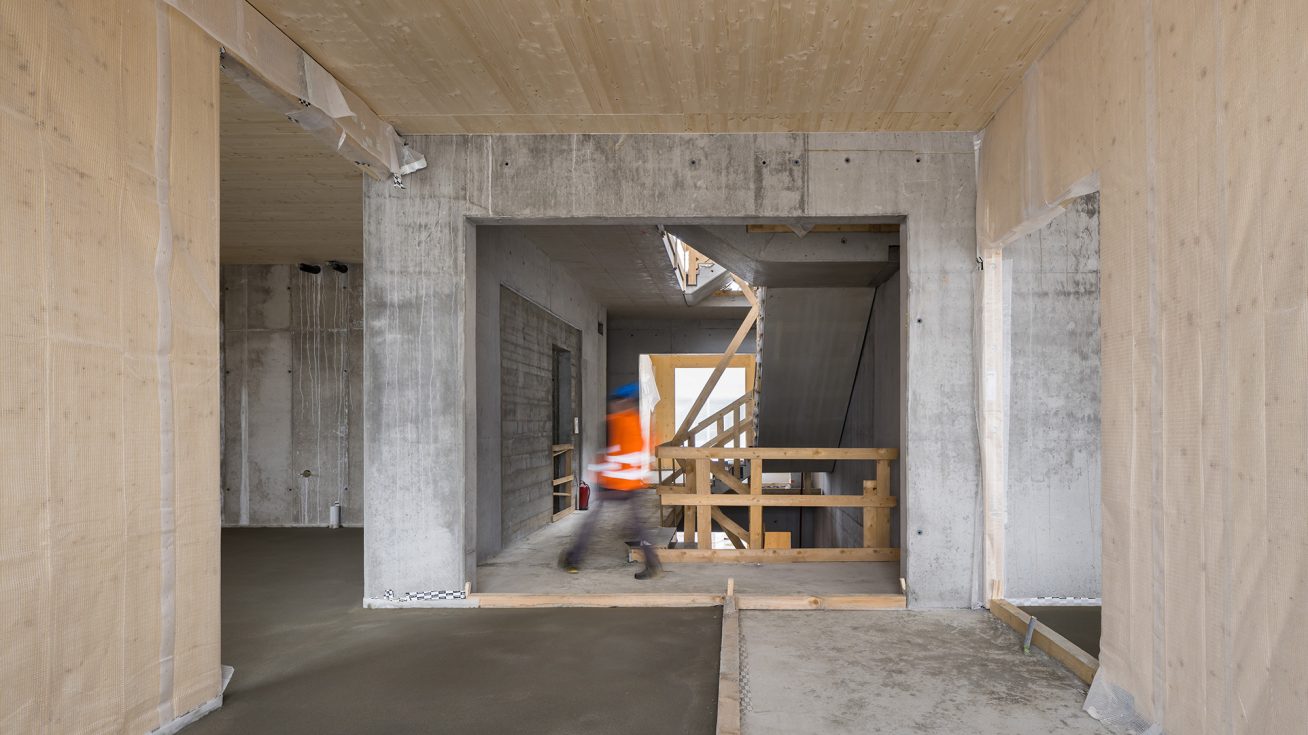
The turning point for wooden buildings is coming, says Tomáš Nemrava
He constantly has to dispel myths about the quality of wooden buildings, but he still predicts a very bright future for them in the coming years. Tomáš Nemrava, the managing director of Nema, a company dealing with wood processing and the realization of wooden buildings, remembers the times when dozens of family houses were built from wood. Today, there are thousands of them and large public wooden buildings worth hundreds of millions are planned. The turning point for timber buildings is now coming, says Tomáš Nemrava.
Nema has been on the market since the 90s. years. What do you see as the main turning points in our country when it comes to wooden buildings?
I think the turning point is now. I can remember a time when 150 single-family homes were being built out of wood a year across the country, and public buildings, apartment buildings, and office buildings were in units. Currently, over three thousand family houses are built from wood in the Czech Republic every year and dozens of large public and residential projects are in the pipeline. We had to mature gradually, whether it is architects, designers, manufacturers or contractors of wooden buildings. And the same goes for investors, mayors and developers. Even construction companies are finding that it is not a problem to replace brick with wood even for larger jobs. This year, we competed for several wooden buildings with investment costs of around half a billion. Big investors are also thinking well ahead, they see the impact of ESG (see article) and that in five years the situation will be radically different.
So, according to you, this is a natural gradual development, similar to the case of Austria, where they are about 20 years ahead…
It’s exactly the same here. It can’t be rushed. As an implementation company, you need time, you can’t just buy machines and fly into a four-storey apartment building.
In the context of the Czech Republic’s readiness for the boom in wooden buildings, the state of forestry is often mentioned, or whether we have enough material. You’re not worried about that?
I don’t. In Ždírc nad Doubravou, in the middle of the Czech Republic, Stora Enso recently built what is essentially the largest CLT panel factory in the world. Our forests produce so much timber that if you built all of our civil engineering structures (hospitals, administration offices, houses, schools, libraries, etc.) out of wood, you would use only a quarter of the annual increment. The other three quarters of the annual wood increment can thus be used for paper, furniture or export. We have three times more wood than we had in Maria Theresa’s time! Even the bark beetle calamity did not bring any dramatic intervention in this respect.
However, we only export a lot of timber abroad. You’ve criticized that a lot in the past.
Yes, because we are behaving like a developing country. We export the primary raw material, logs, without any added value. Instead, we should process it into a semi-finished or ideally finished product, whether it is a building or furniture. The Republic is missing out on a lot of money by doing this, it’s just stupid. We are lazy to think about what to do with the material, how to evaluate it.
Where does Nema primarily get his wood from?
We are ready to be self-sufficient because we see great potential in localism. At our place in the Novohradské Mountains we load the wood, cut it on our own sawmill and dry it. From the residues we heat boilers, we have dryers for 600 cubic meters, we produce KVH and BSH prisms, which we further process.
Do you also deliver abroad?
Approximately 20% of our production goes to Austria, basically panels for Austrian woodworking companies.
Is there anything you envy the Austrians about wooden buildings?
Especially the head start and people’s confidence in wooden buildings. We are still struggling with this here, but they already accept wooden buildings as a normal thing because they have grown up in them for generations. They’re just 20 years ahead of us.
What do you perceive as the most common myths about wooden buildings?
The first concerns durability. If you take care of your house, it will last as long as any other. There are 7 wooden buildings in the world. century and they still work. The second myth is that in wooden buildings everything can be heard. In doing so, we can combine heavy and light layers in such a way that we have far better interstitial walls than any acoustic brick of the same thickness. We can achieve up to 10-15 decibels more attenuation in wooden buildings with the same construction thickness.
The third untruth is that wooden buildings squeak. In the past, poor quality wooden buildings may have been built, even from raw material. But no quality woodworker will do that today. Only dried materials are used, and every house is static tested, so there is no reason for anything to creak. It is also nonsense that everything in a wooden building will crack or burn easily. It is subject to exactly the same fire assessment as a brick house.
Fire safety is the biggest obstacle to large wooden buildings in our country. How do you see it?
Up to 12 metres fire height can be built normally in our country. I would say it’s kind of a woodworking idol to overcome that limitation. We all fight for it, but I personally think that 95% of wooden buildings do not need it at all. And in the case of taller buildings, this is now also solvable. Six-storey wooden buildings are mainly needed by developers in Prague, we are able to solve them in an engineering way. We have already succeeded with one six-storey wooden building. In addition, a methodology is currently being developed by the UCEEB on how to design and assess multi-storey wooden buildings over 12 metres fire height. I think today’s border needs to be changed, and we are slowly working on it.
Is there any typology for which wooden buildings are not suitable?
For example, we are now reconstructing a road bridge using a bridge deck made of wood. And we are preparing three more bridges in the Pardubice Region. They are a third cheaper if they use wood. In Scandinavia, it’s already a normal thing to build wooden bridges. In fact, I don’t know of a building that couldn’t be built out of wood. But projects must always have reasonable economics to benefit investors.
Especially public procurers complain that there are still few suppliers in our country, so they are reluctant to go into wooden buildings. How do you feel about it?
I think we’re getting it wrong. We believe that a wooden building can only be built by a wooden builder. However, it can be implemented by any construction company. She’ll just hire someone to build her a wooden structure, for example. However, construction companies are still afraid of wooden buildings because the procedures are more complicated. The wooden building is thought out in advance to the last screw. This is not the case in traditional construction, and when the builder looks at the plans for a wooden building, he gets dewy-eyed. He sees the full details and is worried about how he’s going to manage to keep an eye on the site. It’s a different approach altogether. Even large construction companies still do not believe that we are able to work with an accuracy of two millimetres. It’s about gaining confidence that our procedures are really accurate and that they will result in less hassle than if a lot of things are dealt with ad hoc on site with unqualified workers.
So what could help timber buildings to get more builders to work with them?
I am convinced that wooden buildings will be promoted also thanks to the fact that we do not have designers, construction managers, budgeters and fewer and fewer people are attending technical schools. We have to be smart about it. Thanks to digitalisation, BIM and thinking up details in advance, we simplify our work. The more we get into digital form, the easier it is to make an offer. We work with BIMTech, which is in ArchiCAD, Revit and Allplan. When the designer uses our tracks in 3D, he has 1000 type details that he can easily pull up, such as the lining of a window. We can then get the 3D house into our Sema carpentry software with one click and produce the production documentation in a day. In the case of timber buildings, we have half the organisation work.
Tomáš Nemrava (1981) is the managing director of Nema, a South Bohemian company specialising in wooden buildings and wooden structures. The company was founded in the early 90s. for years and employs dozens of employees specialized in woodworking. In addition to the sawmill, the company also owns four halls for the production of timber buildings, trusses and trusses.





